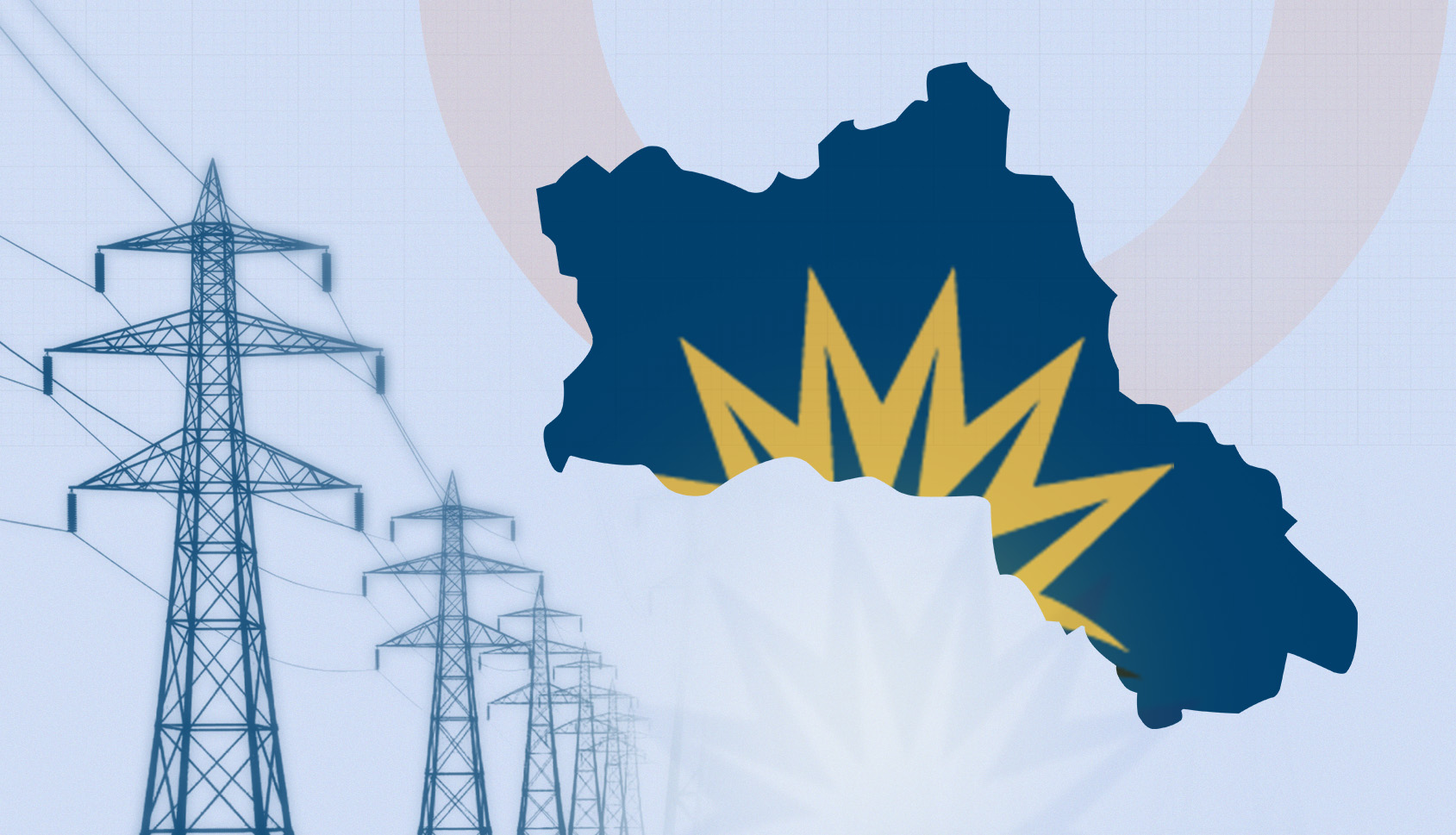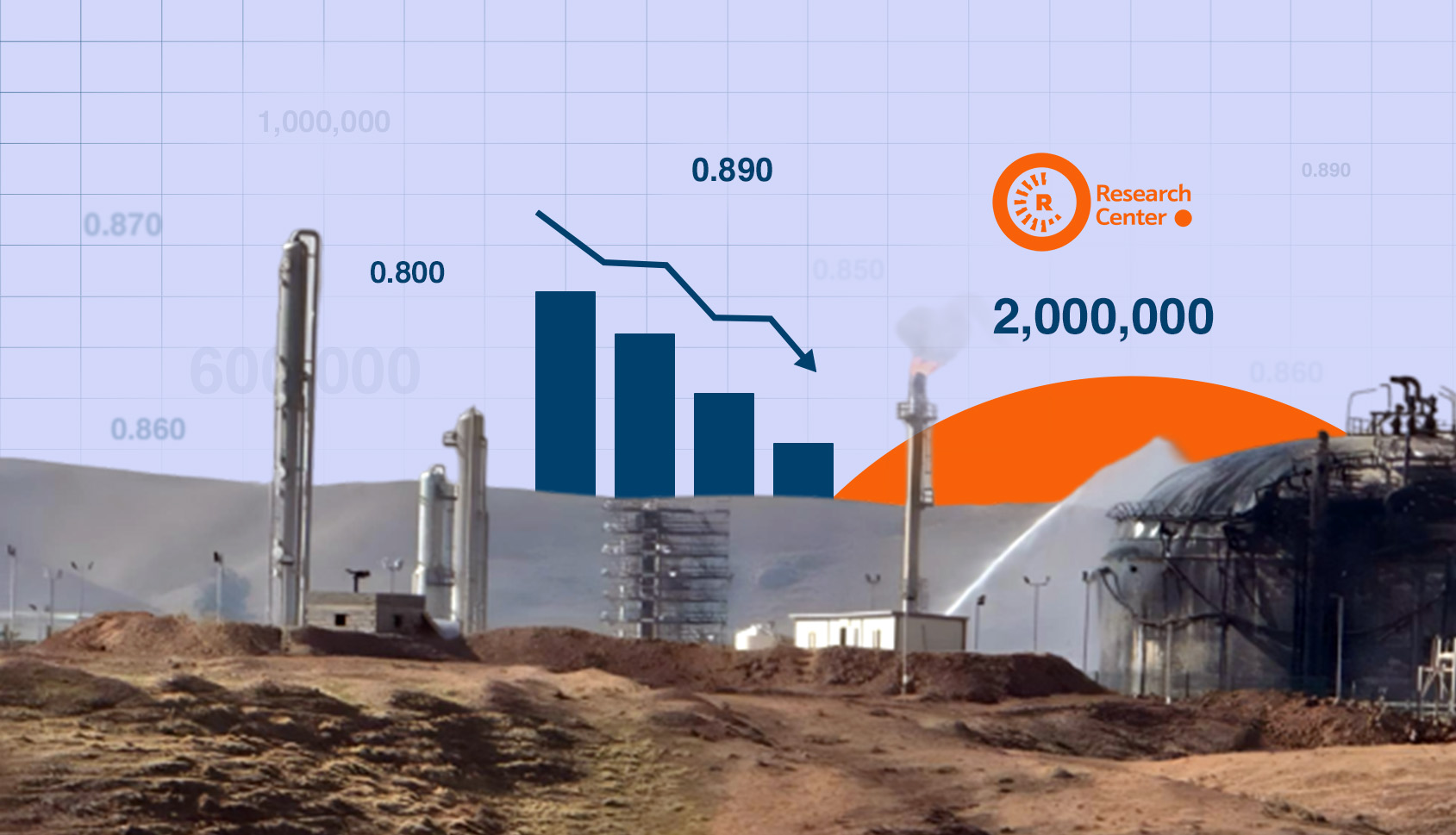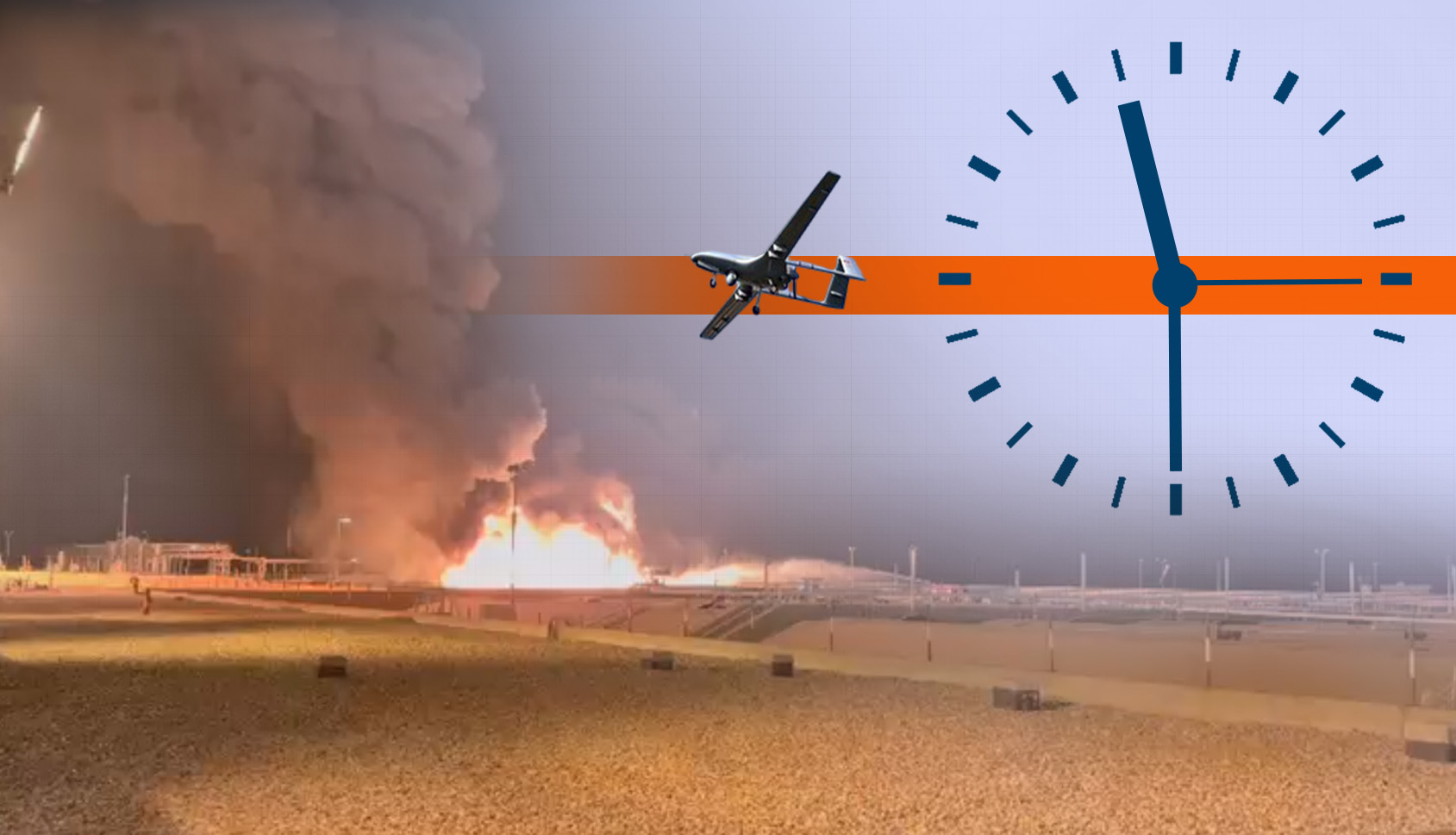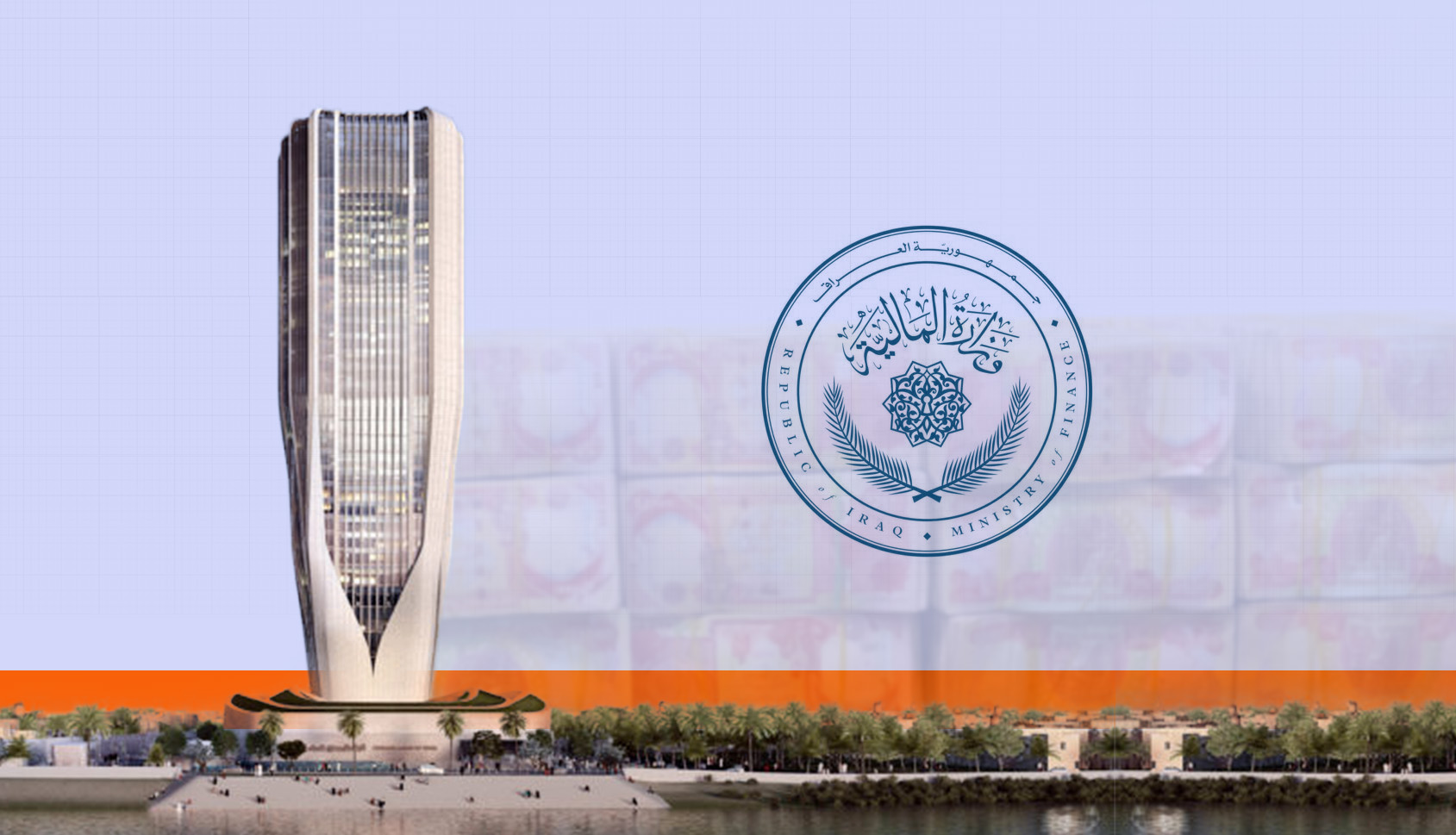Introduction
One year after the launch of the Runaki Project—an ambitious, region-wide initiative designed to provide 24-hour, uninterrupted electricity across the Kurdistan Region of Iraq—approximately 70 percent of the region’s population is now receiving continuous power through the program.
The Runaki Project marks a significant milestone in the Kurdistan Regional Government’s efforts to modernize the energy sector, reduce dependence on small private diesel generators, and minimize environmental pollution resulting from fragmented power production.
According to the latest data released by the Runaki Project management team (as of November 3, 2025), the total number of citizens currently benefiting from the project has reached 4,427,500 across four governorates and three independent administrations within the Kurdistan Region.
Of this total, 985,000 residential subscribers and 122,000 commercial subscribers are now directly connected to the Runaki electricity network. The project aims to achieve full coverage by the end of next year, ensuring that all five partnership categories—covering both public and private electricity distribution frameworks—will be integrated under a unified, reliable 24-hour supply system throughout all administrative areas of the Kurdistan Region.
According to a 2021 survey conducted by the Kurdistan Region Statistics Office, there were 7,354 private generators operating across the region. On average, these generators supplied electricity for about nine hours per day to approximately 1,311,598 subscribers.
The Runaki Project aims to put an end to the long-standing dependence on both private generators and unreliable government electricity, as well as to eliminate the seasonal fluctuations in power availability during the summer and winter months. Its impact is designed to extend beyond residents of major cities or large residential developments—it seeks to provide stable, sustainable electricity to all types of consumers, including residential, commercial, agricultural, industrial, and other sectors.
This initiative has two major environmental implications that will significantly affect carbon dioxide emissions and the broader climate of the Kurdistan Region. First, it introduces an efficient energy demand management system that reduces consumption and prevents unnecessary energy waste. Second, it will phase out nearly 7,000 diesel-powered generators, which have long been a major source of air pollution and greenhouse gas emissions.
Inside the Numbers: Phasing Out 7,000 Generators in the Kurdistan Region
According to a joint survey conducted in 2022 by the Kurdistan Region Statistics Office and the Iraq Statistics Office, and published at the end of last year, the total number of private electricity generators operating across all governorates of the Kurdistan Region was 7,354 units.
Among the governorates, Erbil had the highest number, with 3,776 generators, followed by Duhok with 1,819, and Sulaymaniyah with 1,759. The Sulaymaniyah figure includes Halabja Governorate, which has fewer generators because certain districts—such as Dukan—already receive continuous 24-hour electricity from the public grid and therefore do not rely on private generation.
As of now, 3,789 generators have been phased out, leaving 3,565 still in operation. The breakdown by governorate is as follows: Erbil – 1,452 generators, Duhok – 1,123, and Sulaymaniyah – 990. This large-scale shutdown is part of an environmental initiative aimed at significantly reducing gas emissions from diesel-based generation, and officials say the environmental benefits of this policy are already becoming evident.
According to the same statistical report, these 7,354 private generators were originally operated to supply up to 9 hours of electricity per day, supplementing power shortages from the regional grid. Over the course of one year, they consumed approximately 754.8 million liters of diesel fuel to provide power for 1,311,598 subscribers, producing a total of 5,290,169 ampere-hours of electricity annually.
In addition to fuel consumption, the generators required around 1,154,391 cubic meters of water each year for engine cooling. Notably, about 64% of this water came from the public (government) water supply network, placing further strain on local water resources.
When discussing the plan to phase out private electricity generators that supply power to residential and commercial areas, it is important to highlight the broader economic and social impacts of this decision. Ending generator operations will result in the unemployment of 7,746 workers, each earning an average monthly income of 392,000 Iraqi dinars. In addition, 3,108 generator owners—including 14 women—will experience a complete loss of income.
The generator sector generated an annual total income of 726 billion dinars for owners across the Kurdistan Region: 290 billion dinars in Erbil, 216 billion dinars in Sulaymaniyah, and 219 billion dinars in Duhok. According to government projections, all these figures will fall to zero by the end of 2026, when generator operations cease entirely. At that point, diesel fuel consumption for power generation will be eliminated, and public water will no longer be used for cooling purposes.
Graphic 01: Numbers of Generators in the Governorates of the Kurdistan Region
Source: Kurdistan Region Statistics Office, Ministry of Planning, Kurdistan Regional Government, January 2024
Currently, there are approximately 1.9 million electricity subscribers across the Kurdistan Region, covering residential, commercial, industrial, agricultural, and other sectors. Of these, 1,107,000 subscribers have already been connected to the Runaki Project, which aims to modernize and expand access to the public electricity grid.
According to project data, the monthly electricity cost per subscriber in the Runaki Project varies by consumption level and by month. The median monthly payment reached its highest point in January 2025, at 91,000 dinars, and it’s lowest in May 2025, at 20,000 dinars, as illustrated below.
Graphic 02: Median monthly electricity usage price of Runaki Project subscribers, October 2024 – September 2025
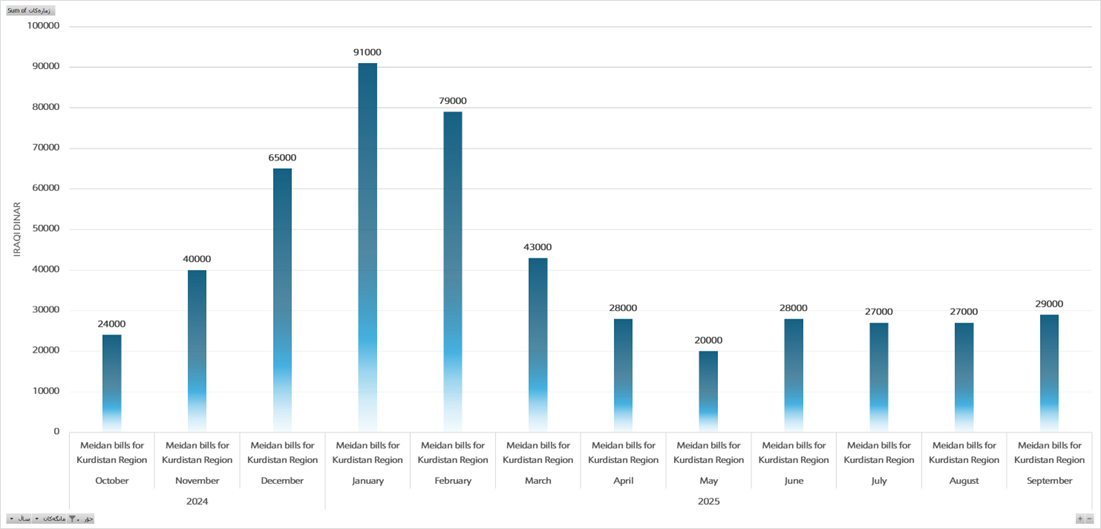
Source: Runaki Project website, retrieved November 4, 2025, at 14:00
Note: The term “median” is used here instead of “average.” This means the price represents the middle value—the two closest numbers among three are taken, and their mean is calculated—to better reflect typical subscriber payments without distortion from extreme highs or lows.
Runaki Project: Environmental Dimensions of the Shift in Electricity Demand and Power Generation Sources
This project involves two key environmental dimensions. The first focuses on reducing overall electricity demand—that is, minimizing unnecessary energy consumption both by citizens and within the power grid itself. The second concerns changing the source of electricity generation for residents, shifting from diesel and heavy fuel oil (“black oil”) to natural gas. Together, these two measures are expected to have a significant positive impact on the water, air, and soil quality of the Kurdistan Region in the years ahead.
In terms of electricity demand, according to the Minister of Electricity, areas connected to the project have experienced a 40% reduction in peak consumption loads at power stations. In practical terms, if a neighborhood previously required 10 megawatts, it now requires only 6 megawatts to meet the same level of demand. This efficiency gain has allowed the electricity supply to meet 24-hour demand without the need to increase total production capacity.
Previously, when electricity demand exceeded production capacity—sometimes doubling—it resulted in reduced hours of power supply. Today, however, despite the Kurdistan Region’s total electricity production remaining at approximately 4,200 megawatts, the number of areas enjoying continuous 24-hour electricity is steadily rising. During seasonal peaks in summer and winter, when demand used to reach 7,500 megawatts, about 70% of residents now have uninterrupted power. Moreover, the region is able to export around 1,200 megawatts to Baghdad. This improvement demonstrates that the project has effectively balanced demand regulation with increased supply capacity.
If the reduction in total electricity demand across the Kurdistan Region due to the Runaki Project reaches 1,000 megawatts, this would effectively return one-quarter of the previous electricity supply back to the power grid. This recovered energy would be sufficient to supply electricity to the equivalent of a city of approximately 750,000 to 1 million homes, assuming each home consumes about 30 kilowatts over a 24-hour period
From an environmental standpoint—particularly in terms of air quality protection—the impact of ending generator operations in the Kurdistan Region is significant. According to the U.S. Energy Information Administration (EIA), burning one liter of diesel releases 2.68 kilograms of carbon dioxide (CO₂) into the atmosphere. Therefore, discontinuing the operation of approximately 7,000 generators, which together consume around 754 million liters of diesel annually, would prevent the emission of about 2.02 million tons of CO₂ each year.
Beyond carbon dioxide, diesel combustion also releases a range of toxic pollutants, including nitrogen oxides (NOₓ), carbon monoxide (CO), sulfur dioxide (SO₂), and black carbon. It also increases the concentration of fine particulate matter—notably PM₂.₅ and PM₁.₀—which contribute to air pollution and pose serious health risks.
For example, annual diesel consumption in the generator sector has been responsible for the release of approximately 15,000 tons of nitrogen oxides, 7,500 tons of carbon monoxide, and 1,200 tons of black carbon. These emissions are major contributors to air pollution, acid rain, climate change, and respiratory and cardiovascular diseases. The graphic below illustrates the amount of gas emissions generated by fuel consumption for nine hours of electricity provision in the Kurdistan Region in 2021.
From another perspective, eliminating generator-based electricity production in the Kurdistan Region would be environmentally equivalent to planting 80 million trees, each capable of absorbing approximately 25 kilograms of CO₂ annually. Alternatively, it would have the same effect as removing about 441,000 fuel-powered cars from the region’s roads—vehicles that currently emit various gases and pollutants into the atmosphere every day.
Graphic 03: Impact of Deactivating All Generators in the Kurdistan Region on CO₂ and Other Emissions

Note 1: CO₂ emission calculations are based on data from the U.S. Environmental Protection Agency (EPA), which estimates that burning one liter of diesel releases 2.64 kilograms of CO₂, and that the average car emits 4.6 tons of CO₂ per year.
Note 2: One mature tree absorbs approximately 25 kilograms of CO₂ from the atmosphere annually.
Conclusion
This transformation in the Kurdistan Region’s energy system aligns with two major global and regional trends: the rising demand for electricity and the urgent need to mitigate climate change, particularly by reducing carbon dioxide emissions.
The Runaki Project represents a pivotal step forward in both respects:
First, by regulating electricity demand and reducing waste, the project helps counteract the continuous growth in energy consumption—a trend seen across the Middle East—while also bringing an end to three decades of reliance on both government-supplied and private generator-based electricity.
Second, by shifting toward cleaner energy sources and adopting diverse pathways to cut harmful emissions, the project actively contributes to global efforts aimed at combating climate change. Such pathways include reducing dependence on oil, capturing or avoiding CO₂ emissions, promoting electric vehicle use, and expanding green infrastructure. In this context, the Runaki Project plays a crucial role by preventing the release of approximately 2.02 million tons of carbon dioxide annually, lowering concentrations of fine particulate matter (PM₂.₅)—which should remain below five micrograms per cubic meter according to international air quality standards—and reducing noise pollution across urban and rural areas alike.
Ultimately, the Runaki Project demonstrates how environmental sustainability and energy modernization can advance together—strengthening the Kurdistan Region’s resilience while contributing to global climate goals.

